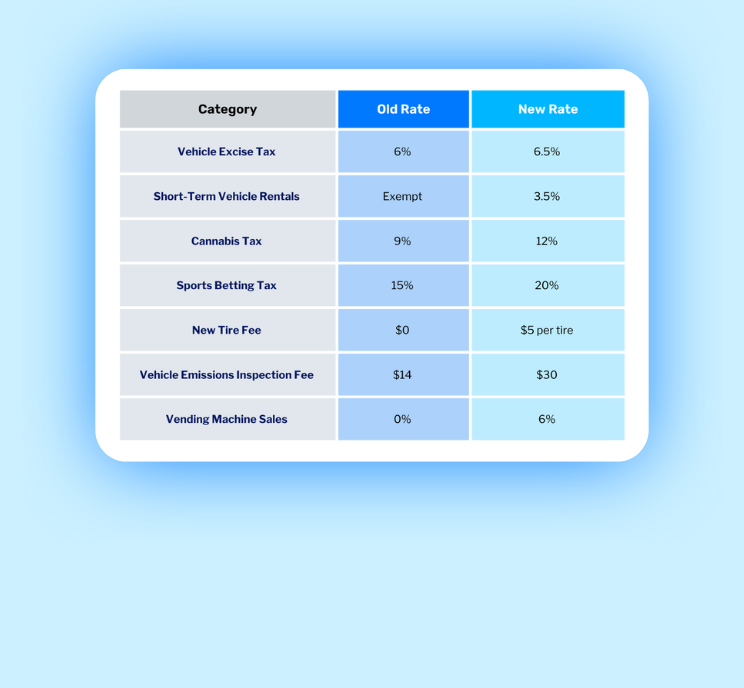Solutions to Change Management and Employee Buy-In Obstacles
As technology and modernization continue to affect and dictate the way business is conducted, business leaders are faced with the evolving task of meeting the demands of their clients, vendors, and employees. It is not uncommon for businesses to attempt to address this through small, incremental changes to their internal processes and their Enterprise Resource Planning (ERP) system. However, these minor adjustments and advancements often fail to produce any long-term solutions to the problem at hand. It also creates a patchwork system of loosely connected devices and applications – a tech equivalent of fixing issues with duct tape.
Many businesses still operate with outdated and inadequate ERP systems that are increasingly unable to meet the needs of customers, employees, and vendors. There are a number of concerns that management teams have with replacing their ERP system, the greatest of which is implementation failure. The biggest driver of implementation failure is a lack of ownership and adoption of the new system. Solving this comes down to successfully addressing two key issues: change management and employee buy-in.
Change Management
Change management is a vital component to a successful ERP implementation. It is the discipline demonstrated by the leadership team that lays the foundation for how the organization prepares for the successful adoption of change. And, equally as important, how leadership supports, guides, and educates its people throughout the lifecycle of the implementation.
One of the most effective change management strategies is the creation of a selection team. This team, comprised of a strong representation of influential employees from numerous departments, is assembled to be the driving force behind the ERP selection. Between the selection team and sponsorship from the executive leadership team, traditional change management issues are mitigated.
For the selection team, developing a successful change management approach begins with a crystal clear vision and a well-defined end-goal. To get clear on this, it’s best to adhere to these six ERP planning pillars:
- Map Current Processes – Before the search process even begins, first map and document the organization’s business processes. This process mapping effort will provide a good initial understanding of the current processes at work in the organization. Many businesses overlook this step and jump right into the search and selection process. It is critical for the selection team to have a strong, cross-functional understanding of the existing core processes before moving forward.
- Identify Process Pros and Cons – Using the process map, conduct a full examination of the organization’s current business processes to determine which are effective, and which are falling short of expectations. Any weaknesses uncovered are often a sign of functional gaps in the current ERP and should be addressed in the new system.
- Determine Strategic Objectives – The new ERP system has to function in alignment with the organization’s strategic objectives. Anticipate how the new ERP system will meet these goals and what efficiencies the new system can bring.
- Define Ideal Process – This is an opportunity to make major business improvements where inefficiencies can be resolved, operational costs streamlined and processes redesigned for greater productivity. It is also an opportunity to involve the organization’s employees. The individuals who are most familiar with a particular process are most likely to understand how best to streamline that process with the help of a new system. Not to mention, involving employees in the planning and decision-making process goes a long way when it comes to employee buy-in.
- Select the Right Solutions – With a firm understanding of the processes, objectives, and needs of employees, explore the variety of cloud-based ERP systems and select the one that meets the specific needs of the organization. The most important factors to look for are long-term benefits, functionality, and flexibility.
- Properly Align Solutions – Ensure the new ERP system aligns with all of the ongoing needs and organizational requirements. Make sure your strategy includes a plan for regular review and improvement.
While these six pillars are critical to a successful ERP implementation, the true key to successfully navigating the obstacles of change management is communication. To effectively institute a change management strategy, the discoveries made while evaluating the six pillars should be communicated to the organization. Transparency is invaluable to change management, and is equally invaluable to ensuring employee buy-in.
Employee Buy-In
More often than not, when it comes to an ERP implementation, the changes executed are imposed “on” the employees of the organization rather than “with” them. This organizational pitfall can be devastating to ongoing change management. Employee buy-in, participation, and acceptance are absolutely crucial for successful organizational change to take place. It doesn’t matter how effective a change management strategy is, without an equally effective strategy for obtaining employee buy-in, an ERP implementation can fall victim to staunch employee resistance.
To avoid the challenges of employee buy-in when implementing a new ERP system, it is critical to engage the entire staff of the organization – from upper management down to the most entry-level employees. Engaging employees and securing employee buy-in can be achieved with a three-step process:
- Communicate – The key to successfully obtaining employee buy-in is through constant, ongoing communication. This addresses the most common pitfall of ERP implementation – it’s typically done “to” them, not “with” them. With open channels of communication, employees feel like they’re being included in the process. Make them feel heard, interact with them, and answer their questions. Few things feel worse for an employee than being left in the dark.
- Set Expectations – Set expectations and share the organization’s goals and milestones for the ERP implementation. If the employees know what leadership expects of them and the outcomes of the implementation, it’s much easier for them to understand how they fit into the process as a whole. It’s also important to let the employees know they’re not expected to just “get” the new system. With anything new, there’s always a learning curve.
- Address Fears – Fear is often the most overlooked and misunderstood factor in gaining employee buy-in. When it comes to an organization-wide change like an ERP implementation, many employees resist the change out of fear. The fear of the unknown is a powerful and dangerous force. As always, communicate with them and reassure them the system change is not about layoffs and it’s not about complicating old processes with “new technology.” Reassure them the implementation is about creating a better place to work, creating more opportunities, and creating an environment where they can better serve their clients.
By effectively communicating with employees, setting expectations and benchmarks, and addressing fears and concerns, earning employee buy-in becomes a much more manageable and smooth process.
With sound strategies in place around change management and employee buy-in, the organizational obstacles to a typical ERP implementation fade away. Fear will always play a significant role in any system implementation, but a strong, unified leadership team and champions of change alleviate those fears.
New ERP system selections and implementations are a substantial undertaking and don’t have to be managed alone. If the process feels daunting or change management and employee buy-in seem out of reach, consider utilizing an experienced team of Technology Advisory consultants who can relieve the pressure of the implementation and make the entire process feel seamless.
An ERP Strategy That Works for Your Organization
For more information on defining your ERP strategy and successful implementation, visit our video series or contact us to learn more about how we can help you navigate this process.





